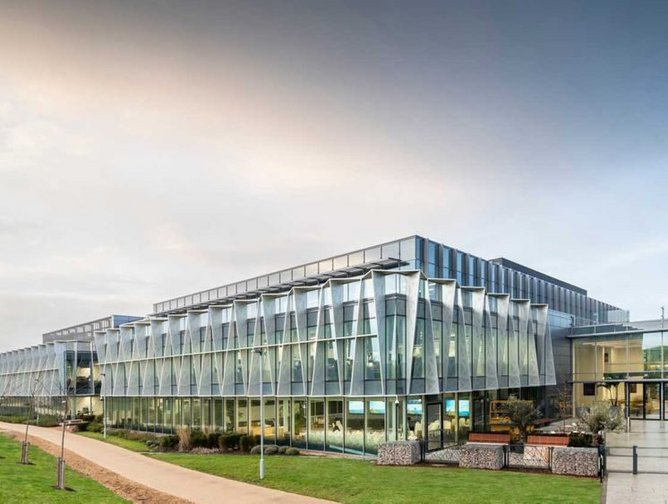Arm: digital transformation in semiconductor procurement
Arm is a British multinational semiconductor and software design company headquartered in Cambridge, UK. Arm technology touches more than 70% of the world’s population, and its processor designs have enabled advanced computing in more than 180 billion chips to date, powering products from the sensor to the smartphone and the supercomputer.
One of the key functions enabling its success is the supply chain. Alisa Bornstein is Group Procurement Senior Director at the company, with over 25 years’ experience in procurement at companies including Ericsson, BT, Telia, Millicom, IHS and now Arm. “I have experience of procurement start-ups, green-field and significant transformations, as well as leading teams in multicultural, complex and fast moving environments and mature and emerging markets. At the places I’ve been I’ve professionalised and digitalised procurement and brought in innovative, agile, lean and efficient service and solutions to the business.”
Of her decision to join Arm, Bornstein says: “Arm stood out for its unique people, culture of collaboration and brilliant minds. Almost two years in, and after 18 months of the transformation program, I am proud to say that procurement at Arm today is recognised as a value-creating, responsible and effective function supporting the business’ objectives and future plans.“
That transformation program was undertaken with the aim of digitalising core procurement processes to enable efficiencies, boost controls, minimise risks, and improve the experience for end-users. “Procurement digitalisation has exploded across the entire business environment, and its entire value proposition to the overall organisation has changed tremendously,” says Bornstein. “Digitalisation influences all areas of procurement, from category management, strategic sourcing, supplier and risk management, to transactional purchase-to-pay operations.”
Naturally, the project has resulted in a ground-up overhaul. “We started our digital journey by improving the basics, standardising and redesigning the whole source-to-pay (S2P) process and deployment of Ariba,” says Bornstein. “This required a significant change in our ways of working and the company culture.” The project hasn’t been without complexities. “We were preparing the rollout for 18 months before we engaged an external implementation partner. With them, a schedule was developed to review the design, make configuration changes and deploy all the solutions. We set separate workstreams for supplier and content enablement, and change management. The plan was rigorously monitored by external and internal teams. Advice and support from the implementation partner in the design phase, during configuration, testing and during go live was absolutely a crucial success factor.”
Having been live with Ariba for the past year, Bornstein is satisfied that the digital strategy has delivered and continues to create significant value for the company, for instance by offering a one-stop shop, with everything you need in one place, and standard source-to-contract process that ensures that purchase-to-pay works seamlessly. Nevertheless, Bornstein is looking into the future trends of the procurement digitalisation . “We’re in the time of technology disruption,” she says. “Why not combine best-of-breed systems and integrate them to work together to deliver a great experience to internal customers and suppliers?”
To this end, she emphasises that procurement is about much more than buying. “There are many other areas where procurement adds value and where technology enables data-driven intelligence and efficiencies. Innovation in Procurement is crucial for professional and forward thinking procurement functions.”
The ongoing transformation of Arm’s procurement is built on the strategy to deploy leading procurement practices and processes, supported by technology solutions, to deliver financial benefits and added value, comprehensive corporate social responsibility (CSR), supplier risk management and stakeholder engagement & collaboration. It has required a shift, among other things, in the way of working with key suppliers and partners, with Bornstein identifying seven key qualities she looks for, namely being:
- An expert in service type and market
- Accountable
- A Strategic Advisor
- An Innovator
- Easy to communicate with
- A Cultural fit
- Ethics and Compliance-minded
“Strategic partnerships with suppliers are critical to supporting an organisation’s objectives in maximising the value it obtains from its external partners, providers of outsourced solutions and third-party services and products,” says Bornstein. “That’s achieved through building collaborative, mutually beneficial relationships, a proactive development of leading practice strategies to maximise the value of these relationships, driving innovation programmes, reducing supplier-related risk, leveraging purchasing power and shared values around sustainability and diversity.”
As with essentially all of the world’s companies, the COVID-19 outbreak has impacted operations, particularly when it comes to the supply chain. “Reports on how the COVID-19 outbreak is affecting supply chains and disrupting manufacturing and service operations around the world are increasing daily,” says Bornstein. “The prediction is that the impact of COVID-19 on global supply chains is to remain for many months. Our procurement team recognises the challenge that COVID-19 poses to our organisation and is working hard to continuously assess and mitigate these risks.”
Bornstein emphasises that it is not only focused on the well-being of its own organisation and employees but also bears in mind the impact on its suppliers, hence the action Arm has taken. “We’ve sent communications to key suppliers encouraging them to share with us their business continuity measures. Arm’s top 20 suppliers were contacted, and follow-up is ongoing to understand their plans and any impact this will have on Arm. We are also working with, for example, IT equipment suppliers to monitor and maintain our stock levels on a regular basis.”
It’s no surprise then that Bornstein is confident that Arm’s procurement function will continue to live up to the company’s reputation as a high-tech leader. “The world is changing. Industries are changing. But our focus in Group Procurement will continue to be a value-creating, responsible and effective Procurement function, supporting Arm’s business and mission to architect a smarter world.”




